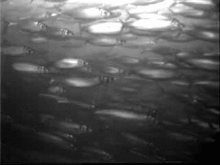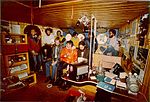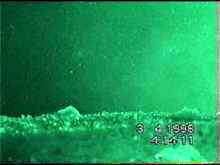| Revision as of 09:07, 14 October 2009 edit62.214.137.214 (talk)No edit summary← Previous edit | Revision as of 09:09, 14 October 2009 edit undo62.214.137.214 (talk)No edit summaryNext edit → | ||
| Line 1: | Line 1: | ||
| {{multipleissues| tone = September 2009|cleanup= September 2009|copyedit= September 2009}} | |||
| ] | ] | ||
| '''Uwe Kils''' (born ], ]{{fn|*}}) is a ] ] specializing in ]. He was born July 10 1951 in , his mother was a ballerina, his father a master-photographer. He began as bricklayer on the , with Hoeft. Next he went to school at Schwarz to become a guitar and violin builder. Next he went to professional photography at his atelier of his father click on we sail any sea. He left gymnasium towards USA to study informatics and computer sciences. After his return he went back a few weeks to gymnasium to reach the 1.2 neccessary to study biolgy. He finished Biology with Herre and Tischler with an A and was accepted into the . He finished his diploma with an A. He had already a printed publication out before the diploma was out and he got offered a position to join a payed expedition to antarctica. On 1979 May 16 he reached his Doctor Title in Marine Biology at the age of 29 with a work on under with "summa cum laude" und "opus eximium". A few days after release it was translated by El Sayed by Texas A&M university and printed in English as book. Kils kept the copyright and it is without break since the first days of the WEB on a NeXT computer online. | '''Uwe Kils''' (born ], ]{{fn|*}}) is a ] ] specializing in ]. He was born July 10 1951 in , his mother was a ballerina, his father a master-photographer. He began as bricklayer on the , with Hoeft. Next he went to school at Schwarz to become a guitar and violin builder. Next he went to professional photography at his atelier of his father click on we sail any sea. He left gymnasium towards USA to study informatics and computer sciences. After his return he went back a few weeks to gymnasium to reach the 1.2 neccessary to study biolgy. He finished Biology with Herre and Tischler with an A and was accepted into the . He finished his diploma with an A. He had already a printed publication out before the diploma was out and he got offered a position to join a payed expedition to antarctica. On 1979 May 16 he reached his Doctor Title in Marine Biology at the age of 29 with a work on under with "summa cum laude" und "opus eximium". A few days after release it was translated by El Sayed by Texas A&M university and printed in English as book. Kils kept the copyright and it is without break since the first days of the WEB on a NeXT computer online. | ||
| ] | |||
| He was fundamental together with Loki Schmidt in raising the funding for the new german polar programm and the . | He was fundamental together with Loki Schmidt in raising the funding for the new german polar programm and the . | ||
| ]. A green spit ball is visible in the lower right of the image and a green fecal string in the lower left. Nobody ever reached this resolution.]] | ]. A green spit ball is visible in the lower right of the image and a green fecal string in the lower left. Nobody ever reached this resolution.]] | ||
| ] | |||
| Titanium microengineering and optical raytracing at and Dynat. | Titanium microengineering and optical raytracing at and Dynat. | ||
| Line 17: | Line 13: | ||
| 1987 he received ]s and ] in Marine Biology and Fisheries Biology from the ] under ] and Walter Nellen with the highest grades. | 1987 he received ]s and ] in Marine Biology and Fisheries Biology from the ] under ] and Walter Nellen with the highest grades. | ||
| ⚫ | His work led to the development of various instruments for ''in situ'' observation of the underwater fauna for field research, including the ]{{ref|Kils_ecoSCOPE}} and the first ever software for full speed video processing ] | ||
| He wrote the article about . A few days later it became cover page article, a few days later cover page in Danmark. | |||
| Later work at Kiel included the study of predator-prey interactions of juvenile ] and ], | |||
| ⚫ | His work led to the development of various instruments for ''in situ'' observation of the underwater fauna for field research, including the ]{{ref|Kils_ecoSCOPE}} and the first ever software for full speed video processing. ] | ||
| ⚫ | ] (38 mm) feeding on copepods—the fish approach from below and catch each copepod individually. In the middle of the image a copepod escapes successfully to the left. The image-frame is shifted to make it easyer for our eye to follow the ultrafast process.]] | ||
| ⚫ | |||
| ⚫ | The ATOLL was composed of three curved fiberglass elements, each 25 m long and having a draught of only 38 cm. For towing, the elements could be assembled in a long S-shape; in operation, the elements would form a horseshoe shape surrounding 150 m² water surface and was developed and deployed in the ]. | ||
| ⚫ | for which a floating laboratory was built called ]{{ref|Kils_ATOLL}}] technology]] | ||
| ⚫ | The ATOLL was composed of three curved fiberglass elements, each 25 m long and having a draught of only 38 cm. For towing, the elements could be assembled in a long S-shape; in operation, the elements would form a horseshoe shape surrounding 150 m² water surface and was developed and deployed in the ]. | ||
| ⚫ | ]] |
||
| ⚫ | ]] Work there led to the discovery of severe case of ] {{inote|ref needed}} and to Kils' involvement in an initiative to repopulate the ] with herring{{ref|Ostsee_Heringe}} as part of the project ''"Saubere Ostsee"'' ("Clean Baltic"). | ||
| ⚫ | ] (38 mm) feeding on copepods—the fish approach from below and catch each copepod individually. In the middle of the image a copepod escapes successfully to the left. The image-frame is shifted to make it easyer for our eye to follow the ultrafast process.]] | ||
| His work was honored by the , the HEISENBERG PRIZE and the 500 000 BIOSCIENCE PRIZE of the VOLKSWAGEN FOUNDATION. He is founder and president of the private and . | His work was honored by the , the HEISENBERG PRIZE and the 500 000 BIOSCIENCE PRIZE of the VOLKSWAGEN FOUNDATION. He is founder and president of the private and . | ||
| Line 33: | Line 29: | ||
| , looking like glass, never imaged before]] | , looking like glass, never imaged before]] | ||
| ⚫ | Subsequently, Kils was invited by the at ] via an (for such 4 greencard visa you need a major internationally recognized prize in the same class as the Nobel Prize, where he became a tenured associate professor in 1994 helping to set up a at with online underwater cameras via . He wrote the article about . A few days later it became cover page article, a few days later cover page in Danmark. | ||
| ⚫ | He programmed the . He worked with glasseels ] at the project and created the web server . | ||
| Lectures: Fisheries Biology, Marine Biology, Experimental Fisheries Biology, Aquaculture, Navigation and Orientation in Fish and Oceanography, Professional Photography, Informatics, Computer Sciences. | |||
| ⚫ | He still works with high resolution images and develops online projects like the lecture Biology of Antarctica at Wikiversity . | ||
| ⚫ | Subsequently, Kils was invited by the at ] via an (for such 4 greencard visa you need a major internationally recognized prize in the same class as the Nobel Prize, where he became a tenured associate professor in 1994 helping to set up a at with online underwater cameras via . | ||
| His respect him: "Dr. Kils is possibly Europe’s most outstanding young marine scientist. Members of the Department of Marine and Coastal Sciences with experience in oceanography regard him as one of the world’s most innovative individuals working in this field", "Kils’ contribution to this area is acknowledged as the best anywhere". | |||
| His love him: "The teacher was excellent, funny + entertaining as well as informative + intellectual - the computer ", " This was the best class I've taken at RUTGERS so far.", "I enjoyed the enthusiasm with with Uwe gave the lectures. Once Uwe started his lectures, three hours went by in five minutes.", "This was my favourite course of my 3 years at RUTGERS.", "Dr. Kils encouraged students to become acquainted with other aspects of science - photography and computers. When he saw a weakness in the class's knowledge, he tried to fill it. He was also very pleasant personally - and a pleasure to greet every Friday morning", "I don't think I could be so nice and positive on such a regular ". | |||
| It is the dream of any scientist to have her name in NATURE or SCIENCE. His was in both. | |||
| His are allowed to publish without his name on. All his publications are sold out. | |||
| ⚫ | He programmed the and developed an . He worked with glasseels ] at the project and created the web server . | ||
| ⚫ | He still works with high resolution images and develops online projects like Wikiversity . | ||
| His favourite lecture "Biology of Antarctica" he holds in your house, live, anywhere. | |||
| ==References== | ==References== | ||
| Line 80: | Line 62: | ||
| * | * | ||
| * | * | ||
| * uwekils@gmail.com | |||
| {{Fishery personality topics}} | {{Fishery personality topics}} | ||
Revision as of 09:09, 14 October 2009
| This article has multiple issues. Please help improve it or discuss these issues on the talk page. (Learn how and when to remove these messages)
No issues specified. Please specify issues, or remove this template. (Learn how and when to remove this message) |

Uwe Kils (born July 10, 1951Template:Fn) is a German marine biologist specializing in Antarctic biology. He was born July 10 1951 in Flensburg, his mother was a ballerina, his father a master-photographer. He began as bricklayer on the Island of Sylt, Kampen with Hoeft. Next he went to school at Schwarz to become a guitar and violin builder. Next he went to professional photography at his atelier of his father FOTO KILS click on we sail any sea. He left gymnasium towards USA to study informatics and computer sciences. After his return he went back a few weeks to gymnasium to reach the 1.2 neccessary to study biolgy. He finished Biology with Herre and Tischler with an A and was accepted into the Institut for Meereskunde. He finished his diploma with an A. He had already a printed publication out before the diploma was out and he got offered a position to join a payed expedition to antarctica. On 1979 May 16 he reached his Doctor Title in Marine Biology at the age of 29 with a work on behaviour and physiology of krill in antarctica under Gotthilf Hempel with "summa cum laude" und "opus eximium". A few days after release it was translated by El Sayed by Texas A&M university and printed in English as book. Kils kept the copyright and it is without break since the first days of the WEB on a NeXT computer online.
He was fundamental together with Loki Schmidt in raising the funding for the new german polar programm and the POLARSTERN.

Titanium microengineering and optical raytracing at Joseph Menke and Dynat.
Aquaculture and pollution work in Norway and Finland with Kari Rouhunen and Timo Meakkinen.
1987 he received Habilitations and venia legendi in Marine Biology and Fisheries Biology from the University of Kiel under Gotthilf Hempel and Walter Nellen with the highest grades.
His work led to the development of various instruments for in situ observation of the underwater fauna for field research, including the ecoSCOPE and the first ever software for full speed video processing dynIMAGE.

Later work at Kiel included the study of predator-prey interactions of juvenile herring and plankton,

for which a floating laboratory was built called ATOLL

The ATOLL was composed of three curved fiberglass elements, each 25 m long and having a draught of only 38 cm. For towing, the elements could be assembled in a long S-shape; in operation, the elements would form a horseshoe shape surrounding 150 m² water surface and was developed and deployed in the Bay of Kiel.

Work there led to the discovery of severe case of oxygen depletion Template:Inote and to Kils' involvement in an initiative to repopulate the Flensburg Fjord with herring as part of the project "Saubere Ostsee" ("Clean Baltic").
His work was honored by the HEINZ MAIER LEIBNITZ PRIZE, the HEISENBERG PRIZE and the 500 000 BIOSCIENCE PRIZE of the VOLKSWAGEN FOUNDATION. He is founder and president of the private KINDER UNIVERSITYand ELITE UNIVERSITY.

Subsequently, Kils was invited by the INSTITUTE OF MARINE AND COASTAL SCIENCES at Rutgers University via an EB1 Visa (for such 4 greencard visa you need a major internationally recognized prize in the same class as the Nobel Prize, where he became a tenured associate professor in 1994 helping to set up a "Virtual Institute for Marine Sciences" at Tuckerton with online underwater cameras via fibre optic cables. He wrote the article about antarctic krill. A few days later it became cover page article, a few days later cover page in Danmark.
He programmed the virtual microscope. He worked with glasseels

at the project Longterm Ecological Observatory and created the web server eelBASE.
He still works with high resolution images and develops online projects like the lecture Biology of Antarctica at Wikiversity .
References
- Kils, U.: "Swimming Behavior, Swimming Performance, and Energy Balance of Antarctic krill Euphausia superba, translation of Ph.D. thesis in German from 1979, College Station, Texas; 1981. Available free via Wikisource
- List of winners of the Heinz Maier-Leibnitz Prize 1978 - 2003, from the Deutsche Forschungsgemeinschaft (DFG) ("German Research Society").
- Kils, U.: The ecoSCOPE and dynIMAGE: microscale tools for in situ studies of predator-prey interactions. Arch Hydrobiol Beih 36: 83-96.
- Kils, U.: The ATOLL Laboratory and other Instruments Developed at Kiel; U.S. GLOBEC NEWS Technology Forum Number 8: 6-9.
- Mentioned at .
- KILS, U., KLAGES, N. (1979) Der Krill. Naturwissenschaftliche Rundschau 10, 397 - 402
- Kils, U. 1987) Verhaltensphysiologische Untersuchungen an pelagischen Schwärmen - Schwarmbildung als Strategie zur Orientierung in Umwelt-Gradienten. Bedeutung der Schwarmbildung in der Aquakultur (Habilitation), Universität Kiel, Ber Inst Meereskunde, Kiel 163: 1 - 168
- Kils, U. (1983) Swimming and feeding of Antarctic Krill, Euphausia superba - some outstanding energetics and dynamics - some unique morphological details. In: Berichte zur Polarforschung, Alfred-Wegener-Institut fuer Polarforschung, Sonderheft 4 (1983). On the biology of Krill Euphausia superba, Proceedings of the Seminar and Report of Krill Ecology Group, ed. S. B. Schnack, 130 - 155
- Kils, U., Marschall, P. (1995) Der Krill, wie er schwimmt und frisst - neue Einsichten mit neuen Methoden. (The Antarctic krill - feeding and swimming performances - new insights with new methods). In: Hempel, I., Hempel, G., Biologie der Polarmeere - Erlebnisse und Ergebnisse. Gustav Fischer Jena - Stuttgart - New York, 201 - 207
- Kils, U., (2000) IMAGES: Krill Stuff. ed. Kayser j., Science 290 (5496): Net watch online publication ecoSCOPE.com - enhanced IT tools and translation of Kils, U., Marschall, P. 1995
- Kils, U., (2006) So frisst der Krill How krill feeds. In: Hempel, G., Hempel, I., Schiel, S., Faszination Meeresforschung, Ein oekologisches Lesebuch. Hauschild Bremen, 112 - 115
Footnotes
Template:Fnb Peer evaluation from 1994
External links
- Publication list
- short CV
- ecoSCOPE: personal web sites
- On-line courseware in Oceanography
- WIKIPEDIA photography gallery
- uhse-elite-university
Template:Fishery personality topics
Categories: